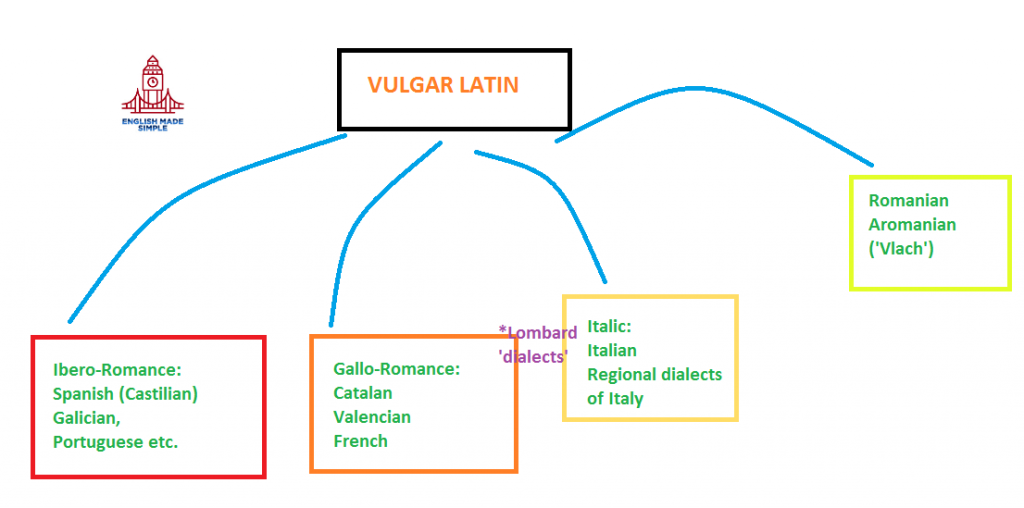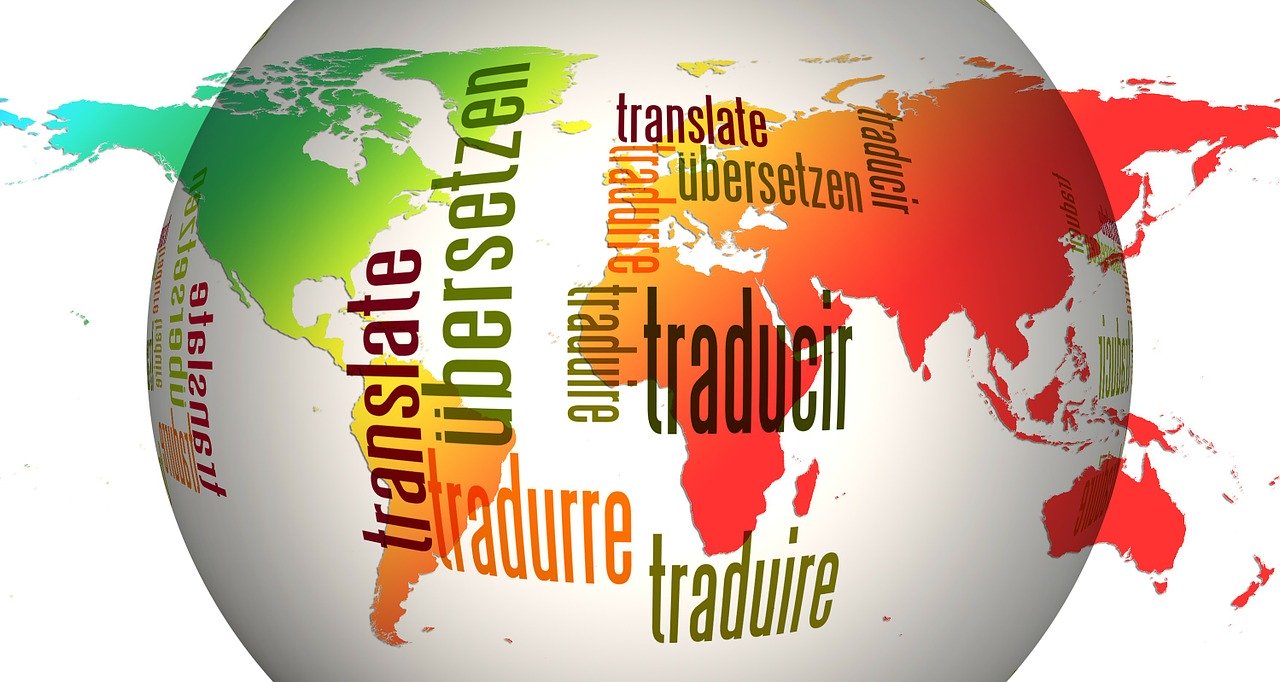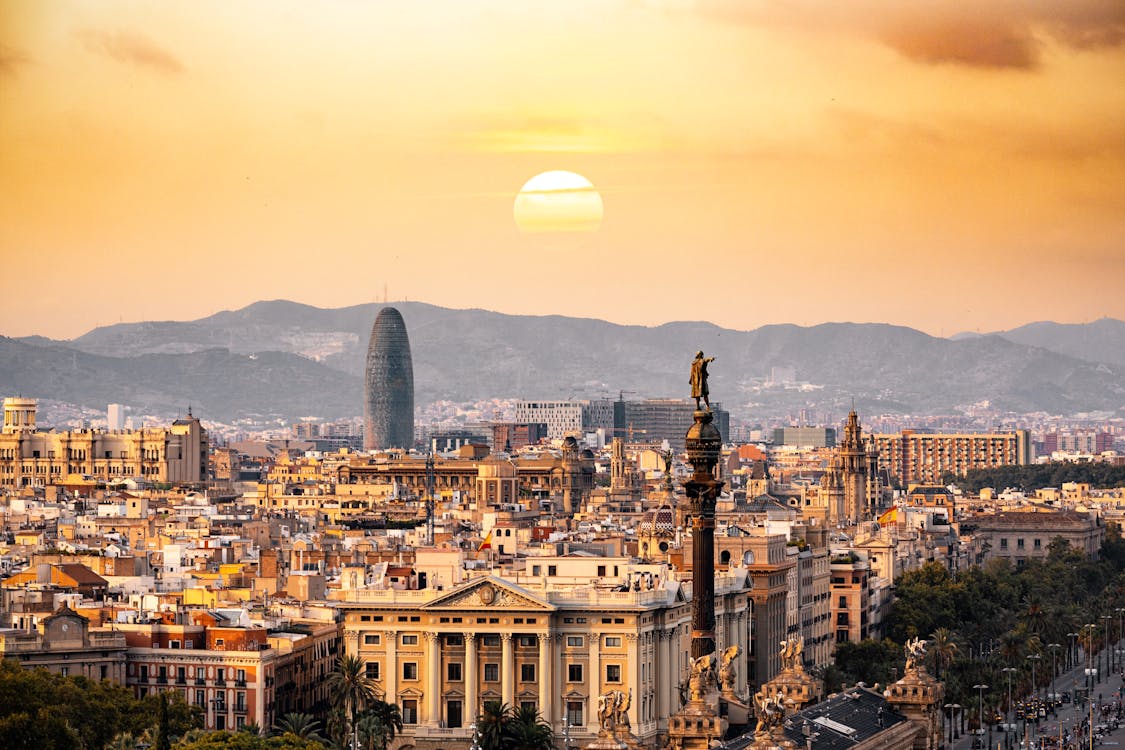In the previous article we spoke about the Indo-European language family. The biggest language family in the world by far. Today we will look at one of the sub-branches of this language family. The Latin Language family.

Related Articles :
1. The Germanic language family
2. The Slavic language family
3. Indo European language family
The Latin language was of course the language of the massive Roman Empire which stretched from the borders of Persia in the east to England in the west and from parts of Germany to the north to Libya in the south and had complete supremacy over the entire Mediterranean.
The Romans were not a particularly exclusive people in restricting citizenship and the privileges that accompanied it to solely those of ‘pure’ Roman, or ‘Latin’ (as in emanating from the wider region that Rome is located in, Latium as it was known in the Roman era, or ‘Lazio’ in modern Italy) or Italic origin but disparate people of a myriad of ethnicities were bestowed with citizenship.
The same held true for the many soldiers that were incorporated in to the imperial Roman army. Celts, Germans, Britons, Middle easterners, Berbers all joined the Roman army and empire.
It cannot be expected that a Germanic or Celtic soldier that became a Roman legionary had the same language of proficiency in Latin as a native Roman even in vulgar Latin, let a lone classical Latin.
Vulgar Latin v Classical Latin.
The written form of Latin generally held to be more ‘correct’ or prestigious differed from the spoken form of Latin existent in Italy which was named vulgar Latin. This is true for most languages with the standard literary form often quite distinct from the spoken form with any one who were to exclusively speak in ordinary every day life in a very formal literary manner being looked upon as being slightly strange, overly formal or detached from reality in the sense that they are speaking in a relatively artificial manner.
In the context of the ancient Roman Empire in addition to many of the non-Italic soldiers not speaking even vulgar Latin like a native, they were located in barracks and garrisons where when they communicated with their conquered subjects e.g. in Gallia (France), Hispania (Spain) that a Germanic origin ‘Roman’ soldier would be attempting to communicate to a Celto-Iberian Spaniard in a form of simplified Latin mutually understandable to both.
This amongst other reasons contributed to the proliferation of different regional forms of ‘Vulgar Latin’, the ‘mother’ of many of the modern day Latin or Romance languages and with influence from their pre-existing languages thus the Celtic languages of northern France influenced vulgar Latin there forming what we know call a Gallo-Romance sub-family of the Latin language family.
The sub-branches of the Latin language family.
The four big remaining sub-branches of the Latin language family are:
- Italic (including modern standard Italian but also regional ‘dialects’)
- Gallo-Romance, the dialects and regional languages of France but also parts of Spain such as Catalan.
- Ibero-Romance, Spanish, Galician, Portuguese and other dialects or languages.
- Romanian. This also includes ‘Aromanian’ or ‘Vlach’.

Some dialects which are located within the borders of Italy actually fall within the Gallo-Romance sub-family such as the various forms of ‘Lombard’ in north-western Italy.
Spanish
Spanish has gone on to become the most widely spoken Latin language in the world because of the Spanish empire a few centuries ago colonizing central and south America and the subsequent Hispanicization of those lands, but even Spanish itself has different variants in both Spain itself and in Latin America. In Spain itself the spoken form of Spanish of Andalucia in the south and the Canary Islands is quite different from that spoken in northern Castile, with some claiming that north Castile is home to the ‘purest’ (a very problematic term as all Latin languages are themselves arguably ‘deviant’ forms of Latin) form of Spanish, a language also known as Castilian.
Portuguese.
Portuguese is also a major world language know spoken in Portugal and Brazil but in other parts of the world such as Angola and Mozambique. It is related to Galician (‘Gallego’) and old Portuguese is in fact also known as Galician-Portuguese.
Here is an example to show how similar they can be.
English:
I speak English.
I want to drink.
I will sleep.
Portuguese
Eu falo ingles.
Eu quero beber.
Eu vou dormir.
Galician:
Falo inglés.
Quero beber.
Vou durmir
And in Galician, ‘eu’ is also ‘I’ like in Portuguese.
French
The most Germanic and Celtic of all the ‘Latin’ languages in grammar, lexis and phonology. The Celtic influence in French can be seen in the way that in France (not Belgium or Switzerland) the word for eighty is ‘quatre-vingts’ which literally means four-twenties which is a relic of the pre-Roman Celtic languages of France.
France was the prestige language of Europe for a few centuries succeeding Latin in that role.
At a certain point in European history no person of any great worth or status was considered cultured if he did not speak the, what was then perceived as ‘language of learning and culture’, French.
It has however lost this status to English in the recent past with the rise of first the global British empire and more importantly the post-WW2 rise of an America-dominated world order.
Various forms of vernacular French existed for centuries with the word for ‘yes’ being ‘oui’ or something similar in the north and ‘oc’ in the southern dialects. This difference in this particular word being used to mark the northern dialects and the southern dialects.
Eventually the heavily centralised French state imposed strong mono-lingualism through out the country made much easier to do with the advent of modern mass communication. Also military service, mass schooling and other things so the proliferation of standard French (based on the Ile de France) with also a strong rejection and discouraging of the use of regional dialects.
Italian
The closest major language to Latin (though Sardinian is closer but a relatively small regional language) especially in terms of its vocabulary. It is however different to its distant ancestor in some fundamental ways including the absence of a ‘neuter’ gender which ancient Latin did have.
Latin is a distinct language to modern Italian and other languages such as Catalan are easier to understand for many Italians. Modern Italian is based on the dialect of Tuscany and not interestingly the ancient Roman capital of Rome.
Technically spoken in four countries, Italy, the south-east of Switzerland, San Marino and the Vatican city! Italian however was spoken in various forms in other parts of the world where large diaspora communities migrated to e.g. Brazil, Argentina, the USA though obviously dying out as people resident in those countries adopt the language of the country they live in.
Catalan
Sometimes said to be intermediate between Spanish and French. Catalan is also a Gallo-Romance language so technically in genetic terms closer to Lombard dialects in Italy than say for example Andalusian Spanish.
Catalan and the very similar Valencian are spoken in Catalonia, the Balearic islands, Andorra and Valencia.
Occitan another Gallo-Romance language is very close to Catalan and both fall within the Occitano-Romance sub-group of the Gallo-Romance language family.
Catalan has an interesting relationship with ‘Castilian’ (Spanish) with Catalan nationalists eager for more and more parity between the two languages, with some nationalists arguing for an independent Catalonia.
More people speak Catalan than speak:
Danish.
Finnish.
Slovene.
and various other European languages which have the status of an official language of an independent state.
Romanian
Romanian is interesting to linguists because grammatically it is the closest language to Latin but definitely not in terms of vocabulary. Romanian has the three genders of classical Latin, i.e. masculine, feminine and neuter.
It is the only Latin/Romance language in mainly Slavic Eastern Europe.
Romanian differs from other Latin languages in that it is the only one where the article is after the noun.
So for instance in English we say ‘the man’, but in Romanian it would be like ‘man the’ or if we hyphenize it ‘man-the’ or if we make it in to one word ‘manthe’.
Whereas in Spanish, French, Italian you would put the article before the noun.
The man – English.
El Hombre – Spanish
L’uomo – Italian
Le homme – French
L’home – Catalan
O home – Galician
O homem – Portuguese
in Romanian you would say:
“omul”
So the “om” is similar to the “homem”, “home”, “homme”, “uomo”, “hombre” of Portuguese, Galician, Catalan, French, Italian and Spanish respectively.
but the “ul” in “omul” signifies ‘the’.
Latin had no articles.
Many Romanian speakers find it easy to understand Spanish language TV series seen on films with Spanish being a fellow Latin language and thus a high level of intelligibility.
In addition to these main forms of Latin/Romance languages there are others.
- Occitan (regional language/dialect in Southern France)
- Romansch, one of the four official languages of Switzerland.
- Sardinian, the closest language phonetically to Latin.
- Haitian Creole, a Creole form of French.
There are quite a few others.







